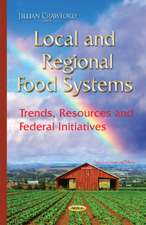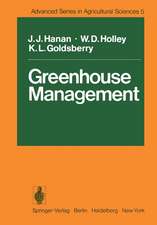No-Tillage Agriculture: Principles and Practices
Autor Ronald E. Phillips, Shirley H. Phillipsen Limba Engleză Paperback – 2 apr 2012
Preț: 641.03 lei
Preț vechi: 754.15 lei
-15% Nou
Puncte Express: 962
Preț estimativ în valută:
122.66€ • 128.41$ • 101.49£
122.66€ • 128.41$ • 101.49£
Carte tipărită la comandă
Livrare economică 07-21 aprilie
Preluare comenzi: 021 569.72.76
Specificații
ISBN-13: 9781468414691
ISBN-10: 1468414690
Pagini: 324
Ilustrații: XIII, 306 p. 38 illus.
Dimensiuni: 152 x 229 x 17 mm
Greutate: 0.44 kg
Ediția:Softcover reprint of the original 1st ed. 1984
Editura: Springer Us
Colecția Springer
Locul publicării:New York, NY, United States
ISBN-10: 1468414690
Pagini: 324
Ilustrații: XIII, 306 p. 38 illus.
Dimensiuni: 152 x 229 x 17 mm
Greutate: 0.44 kg
Ediția:Softcover reprint of the original 1st ed. 1984
Editura: Springer Us
Colecția Springer
Locul publicării:New York, NY, United States
Public țintă
ResearchCuprins
1. Introduction.- Reasons for Tillage.- Present Philosophy in No-Tillage.- 2. Effects of Climate on Performance of No-Tillage.- Precipitation and Evapotranspiration.- Soil Temperature.- Corn Seedling Growth as Related to Soil Temperature.- Time of Planting.- 3. Soil Adaptability for No-Tillage.- Some Factors Affecting Adoption of No-Tillage 42 Soil Drainage.- Suitability for Sloping Land.- Soil Water Erosion.- Erosion Control by No-Tillage.- Controlling Soil Wind Erosion by No-Tillage.- Steeplands.- 4. Soil Moisture.- Effect of Mulch on Evaporation of Soil Water.- Effect of Soil Texture, Pans and Drainage Class on Soil Water Evaporation.- Soil Water in Field Studies.- Effect of No-Tillage on Root Growth.- 5. Fertilization and Liming.- The Soil Environment Under No-Tillage Versus Conventional Tillage.- 6. Energy Requirement in No-Tillage.- Energy Use in Agriculture.- Need for Energy Conservation in Agriculture.- Energy Use and Efficiency in Tillage Systems.- Energy Efficiency in Fertilizer Management.- Energy Efficiency in Forage Production.- 7. Response of Weeds and Herbicides Under No-Tillage Conditions.- Some Factors Affecting Weed Control in No-Tillage.- Effect of Surface Plant Residue on Herbicide Persistence.- 8. Other Pests in No-Tillage and Their Control.- Insects.- Diseases.- Corn.- Sorghum.- Soybeans.- Wheat.- Summary.- 9. Changes in Soil Properties Under No-Tillage.- The Microbial Environment.- Soil Physical Properties.- Chemical Properties.- 10. Multicropping.- Multicropping With No-Tillage Techniques.- Beginnings of Multiple Cropping in the United States.- Requirements for Successful Multiple Cropping.- The Future of Multiple Cropping.- 11. Equipment.- Planters and Planting No-Tillage.- Tractor Requirements for No-Tillage.- Pesticide Applicators.- Hand Planting.- 12. No-Tillage in the Tropics.- Soil Resources.- Water Resources.- Human Resources.- Prospects for Success of No-Tillage in the Tropics.











